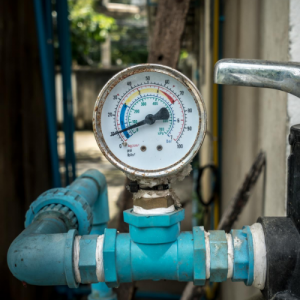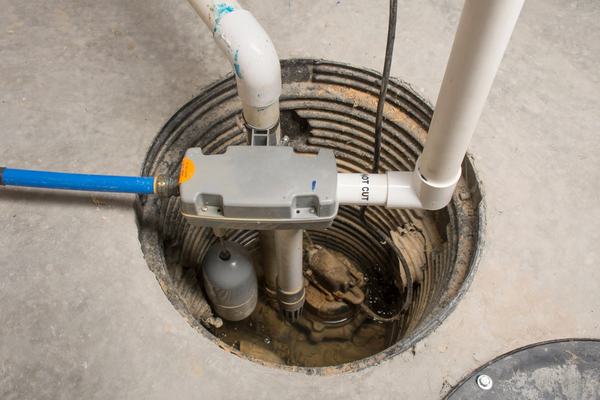We've found the article about 4 Ways to Troubleshoot Low Water Pressure down the page on the net and think it made perfect sense to quickly share it with you on my blog.

Low tide pressure in your house can be an aggravating problem, impacting every little thing from bathing to cleaning meals. If you're experiencing weak water circulation, there are numerous possible reasons and options to check out. In this overview, we'll discuss typical factors for low water stress and useful actions to deal with the concern effectively.
Introduction to Low Water Pressure
Low tide stress happens when the flow of water from your faucets, showers, and various other fixtures is weak than typical. This can make day-to-day tasks more challenging and less effective. Comprehending the causes of low tide pressure is essential to locating the best solution.
Typical Causes of Low Water Pressure
Faulty Stress Regulatory Authorities
Stress regulators are responsible for preserving regular water stress in your house. If they malfunction, it can lead to low tide stress or uneven flow throughout your home.
Municipal Water Supply Issues
Often, the trouble lies outside your home. Metropolitan water system concerns, such as main line leakages or upkeep job, can briefly decrease water stress in your location.
Pipeline Obstructions
In time, pipes can become clogged with natural resource, debris, or particles, restricting the flow of water. This is a common concern in older homes with galvanized steel pipes.
Deterioration
Deterioration within pipelines can result in leakages and lowered water pressure. Rust accumulation can tighten water circulation, specifically in maturing plumbing systems.
Exactly How to Diagnose Low Tide Pressure
Evaluating Pipes
Evaluate noticeable pipes for signs of leakages, corrosion, or obstructions. Focus on any kind of unusual noises, such as knocking or rattling pipes, which could indicate problems within the plumbing system.
Consulting with a Plumber
If you're incapable to determine the root cause of low water pressure, think about employing a specialist plumber to conduct a detailed assessment. They can identify underlying issues and suggest suitable options.
Checking Faucets and Fixtures
Start by evaluating the water stress at various taps and fixtures throughout your home. If the problem is separated to specific locations, it may suggest local problems.
Do It Yourself Solutions to Deal With Low Water Pressure
Flushing Hot Water Heater
Sediment build-up in the water heater can restrict circulation and decrease efficiency. Purging the container periodically helps eliminate debris and maintain optimum performance.
Inspecting Pressure Regulatory Authority
Ensure that the pressure regulatory authority is functioning appropriately. Changing or replacing the regulatory authority can aid bring back correct water stress throughout your home.
Cleaning Up Aerators and Showerheads
Mineral deposits can collect in aerators and showerheads, decreasing water circulation. Get rid of and clean these components frequently to boost water stress.
Cleaning Clogs in Pipes
For minor clogs, try using a plumbing serpent or chemical drain cleaner to clear blockages in pipelines. Be cautious when making use of chemicals and comply with safety standards.
When to Call a Specialist Plumber
If DIY initiatives fall short to fix the problem or if you presume substantial plumbing problems, it's ideal to look for help from a certified plumber. They have the knowledge and devices to deal with complicated issues securely and successfully.
Preventive Measures to Keep Water Pressure
Installing a Pressure Booster
Think about installing a pressure booster pump to improve water pressure in areas with regularly low flow. This can be specifically beneficial for multi-story homes or properties with high-demand fixtures.
Tracking Water Usage
Bear in mind water usage behaviors and avoid ill-using the plumbing system. Easy modifications, such as astonishing showers and laundry lots, can help keep appropriate water pressure.
Regular Upkeep
Schedule regular maintenance for your plumbing system to stop issues such as corrosion, leakages, and obstructions. Addressing minor problems early can aid avoid even more substantial repair work later.
Verdict
Managing low tide stress can be discouraging, but recognizing the underlying reasons and executing ideal services can bring back ideal circulation throughout your home. Whether it's cleaning aerators, evaluating pipes, or talking to a plumber, taking aggressive steps can ensure a constant supply of water for your day-to-day demands.
FOUR WAYS TO FIX LOW WATER PRESSURE NOW
Turning on a shower or faucet only to find the water comes out in a sad, slow drizzle is never a good feeling. How exactly are you supposed to wash a pan or take a quick shower when it takes 10 minutes just to rinse off a little soap? The good news is that when your water pressure is bad, there's always a cause: typically one that can be easily fixed. Here are some of the most common causes of low pressure and what you can do to fix the issue:
DEBRIS AND MINERAL DEPOSIT BUILDUPS
If you notice low water pressure from just one or two of the fixtures in your house, the problem likely has to do with debris buildup. Water is full of minerals and other debris, all of which can accumulate in your pipes and on your fixtures. This can cause a blockage that affects how much water flows through. To fix this, try filling a small plastic bag with white vinegar, and use a rubber band to hang it around your showerhead or faucet. Let the head of the fixture soak for a few hours, and the vinegar should loosen the deposits.
WATER LEAKS
Leaks are another common cause of low water pressure. If water is flowing out of your plumbing through a hole or crack before it can reach your fixture, the pressure coming out of the faucet or showerhead will be lower. A plumbing professional is your best bet for finding and repairing a leak in your water supply pipes.
Leaks are another common cause of low water pressure. If water is flowing out of your plumbing through a hole or crack before it can reach your fixture, the pressure coming out of the faucet or showerhead will be lower. A plumbing professional is your best bet for finding and repairing a leak in your water supply pipes.
A VALVE ISSUE
If you have low water pressure throughout your home, check your main shut-off valve to make sure it's completely open. You may also want to see if there's a pressure-reducing valve installed. If there is, have a plumber help you adjust the settings to get the pressure you're looking for.
OTHERS USING WATER
Believe it or not, your low water pressure could be caused by your neighbors. If you notice low pressure at certain times of day, it may be because you and the people living next to you have similar schedules - when everyone is showering at the same time, the pressure will be lower in every home. Low pressure throughout the neighborhood may also be caused by an issue with your municipal water supply. If that's the case, call the supplier to see if they're working on the issue.
https://www.rotorooter.com/blog/water-leaking/low-water-pressure-fixes/

I'm very involved in and I hope you appreciated the new piece. Sharing is caring. You won't know, you may be doing someone a favor. I take joy in your readership.
Pricing
Comments on “Useful Tips for Overcoming Low Water Pressure in Your Home”